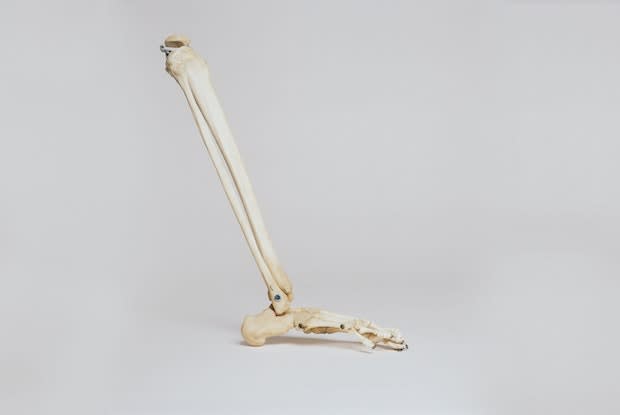Table of Contents
I. What is Deep Vein Thrombosis?
III. What Causes Deep Vein Thrombosis?
IV. How do I Know When to See a Doctor?
What is Deep Vein Thrombosis?
When many people think of blood clots, deep vein thrombosis (DVT) often comes to mind. Not every blood clot is due to a DVT, but this type of clot can be dangerous and lead to severe complications or death. These types of clots form in the body’s veins when a clump of blood turns into a solid mass. DVTs most commonly occur in the lower leg, thigh, or pelvis. In rare cases, they may also develop in the arm. [1]
DVTs are a dangerous condition because symptoms may not always be noticeable. Some people may not know they are experiencing a DVT until they experience a severe side effect like a pulmonary embolism. Luckily, there are many medications available to treat blood clots, including Coumadin (warfarin), Elmiron (pentosan polysulfate sodium), Eliquis (apixaban), and Aggrenox (dipyridamole + ASA). Read on to learn more about the symptoms and treatments for deep vein thrombosis. [2]
As with other blood clots, DVT symptoms depend on where a clot is occurring. The Centers for Disease Control cite that around half of the people with deep vein thrombosis experience symptoms. The most common symptoms include: Some people may also experience upper extremity DVT, which comes with different symptoms. If you do experience symptoms, they may include: Several factors may cause deep vein thrombosis. If you develop a DVT before 45, genetics are likely the culprit. If a close family member suffers from DVTs, you may be more likely to develop the condition. Other causes of DVT include: Injury: If you suffer damage to a blood vessel wall, it may trigger clotting factors. The blood may form a clot, which can dislodge from the vessel wall and travel throughout the body, causing complications. Inactive lifestyle: If you frequently sit for long periods, blood may pool in the legs' lower parts. If you can’t move for hours at a time, the blood flow to the legs may slow, and clots can develop. Surgery: When you have surgery, blood vessels may be damaged in the process, leading to the development of a clot. If you have to remain in bed after surgery with little movement, you may also experience a blood clot. [3] As mentioned earlier, symptoms may not occur, making it difficult to determine if you are experiencing a DVT. If you are someone who has symptoms, you should seek medical attention as soon as you can. It is important to get medical advice immediately because DVT can become life-threatening in certain situations. If a DVT has traveled to your lungs and a pulmonary embolism occurs, you will have more noticeable symptoms. You may be experiencing a potentially-deadly pulmonary embolism if you experience: If you know you are prone to DVT or possess any other risk factors, there are a few steps you can take to decrease your risk of a blood-clotting event. Wearing compression stockings is an easy first step. These stockings are available at most pharmacies and prevent swelling. These stockings are worn just below the knee and are recommended for long-haul flights. You may have to wear them every day if you are at high risk for a DVT. It is also important to get moving. You may want to take daily walks to improve blood flow. Elevating your arms and legs while you sit may also help prevent DVTs. If you work a desk job, it isn't easy to be up and moving all the time. If you are constrained this way, make an effort to stretch your legs at least once an hour to keep the blood moving steadily in the calves. [3] Taking your prescribed blood-thinning medications is essential in preventing DVTs. You will likely be prescribed blood thinners if you have recently had surgery or have a history of blood clots. Common blood thinners include Coumadin (warfarin), Elmiron (pentosan polysulfate sodium), Eliquis (apixaban), and Aggrenox (dipyridamole + ASA). Drugs like Eliquis are anticoagulants that reduce blood clotting and reduce the risk of stroke and embolism in those with atrial fibrillation. [4] Coumadin is a long-standing medication that reduces clots and keeps the blood flowing smoothly in the body. Coumadin may increase your risk of excessive bleeding, so your doctor may require regular checkups to make sure your dosage is working for you. [5] Dipyridamole is used in conjunction with blood thinners like Coumadin or Eliquis to prevent clots after heart valve replacements. [6] Lastly, Elmiron is a weak blood thinner that is primarily used for bladder pain (interstitial cystitis) and osteoarthritis. Your doctor may prescribe it as a blood thinner if you are at risk for clots. Talk to your doctor to discuss the best treatment form if you are at risk for deep vein thrombosis. [7] The content in this article is intended for informational purposes only. This website does not provide medical advice. In all circumstances, you should always seek the advice of your physician and/or other qualified health professionals(s) for drug, medical condition, or treatment advice. The content provided on this website is not a substitute for professional medical advice, diagnosis, or treatment.
Symptoms of DVT
What Causes Deep Vein Thrombosis?

How do I Know When to See a Doctor?
How to Prevent DVTs

Medications for DVTs
